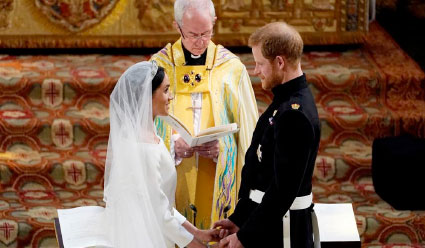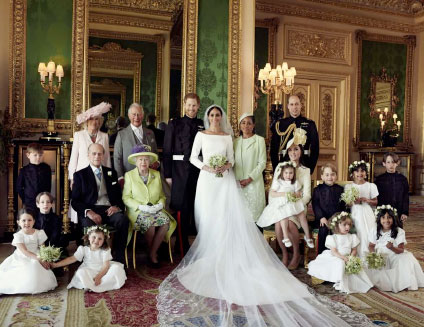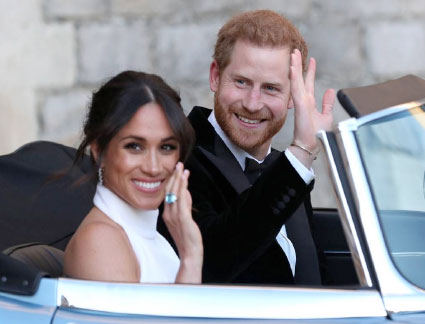American Princess, British Royal Family, Global Event.
Okay, so Meghan won´t actually be a princess, she’ll have the title of Duchess, but unless you’ve been living under a rock you’ll know that this weekend Meghan married Britain’s Prince Harry. In what I’m sure was fairy tale wedding for both Harry and Meghan wedding we saw a new kind of Royal Wedding that was as much Meghan’s as Harry’s. Harry brought the traditional Royals, the tiara, the Archbishop of Canterbury whilst Meghan brought a breath of fresh air with a Gospel choir, an American Preacher and different crowd of guests.

Will we see this so-called change reflected in the monarchy and in Britain itself? I don’t know. Only time will tell, but the way the media treat Meghan and her family leads me to believe that probably not. As much as I hope that this wedding brings about real change, we have to look at it for what it is, two individuals who love each other. Yes, it’s romantic and everybody loves lovers who have overcome their families’ “disapproval” (not that we know the Royal Family ever disapproved of Meghan, only that the press did). We should be happy for them, but the Prince’s impending marriage to a bi-racial foreigner doesn’t seem have hurried the Home Office to provide British paperwork to British citizens embroiled in the Windrush scandal, or re-home those who lost theirs in the Grenfell tragedy. Unfortunately, the hostile environment created by the government and the media aren’t always so welcoming towards people of colour.

Today it has been reported that around 50 million well-wishers watched the event from the US and the UK, and there will have been people waking up early or staying up to watch from all over the globe. There were parties held in the UK, US, Kenya and many other places around the world.
However, how can so many people around the world, who speak different languages watch the same event at the same time? We are used to having films and TV programmes dubbed or subtitled into our own language, but this is when they have months to prepare, live events such as the Royal Wedding must be translated in the moment.
In order to transmit the event to viewers all across the globe, two techniques can be used the first is voice dubbing. This is where the original sound is replaced with the dialogue in the target language. In films and TV programmes where there have been months to prepare usually the whole soundtrack is re-recorded by voice actors. However with live events there is no time to do this so UN-Style Voice-Over can be used. This is where the speaker will begin speaking in his or her native tongue, shortly after this the interpreter will begin translating the event. This is a technique often used in news reports and conferences and it allows the original narration to still be heard in the background.
The second technique is subtitling. Since, as I have already mentioned, the subtitles need to be created quickly a technique that is useful for live events is live subtitling. Instead of involving a subtitling spending hours carefully translating a script, trying to recreate the subtle nuances in target language, this task is similar to interpreting. The live subtitler interprets the event as it happens, this is picked up by a voice recognition system which creates the subtitles. Obviously, this doesn’t always work…so the subtitler also has to proof read the subtitles and make any necessary corrections before they go live.
Both these techniques are subject to tight time constraints and subject to scrutiny since the audience has both the target media and the source media, and the internet is usually full of subtitling or dubbing fails after an important event.
However, luckily for Harry and Meghan the translation side of the event seems to have gone off without a hitch!
Here at CBLingua we wish the happy couple a long and happy future together!

